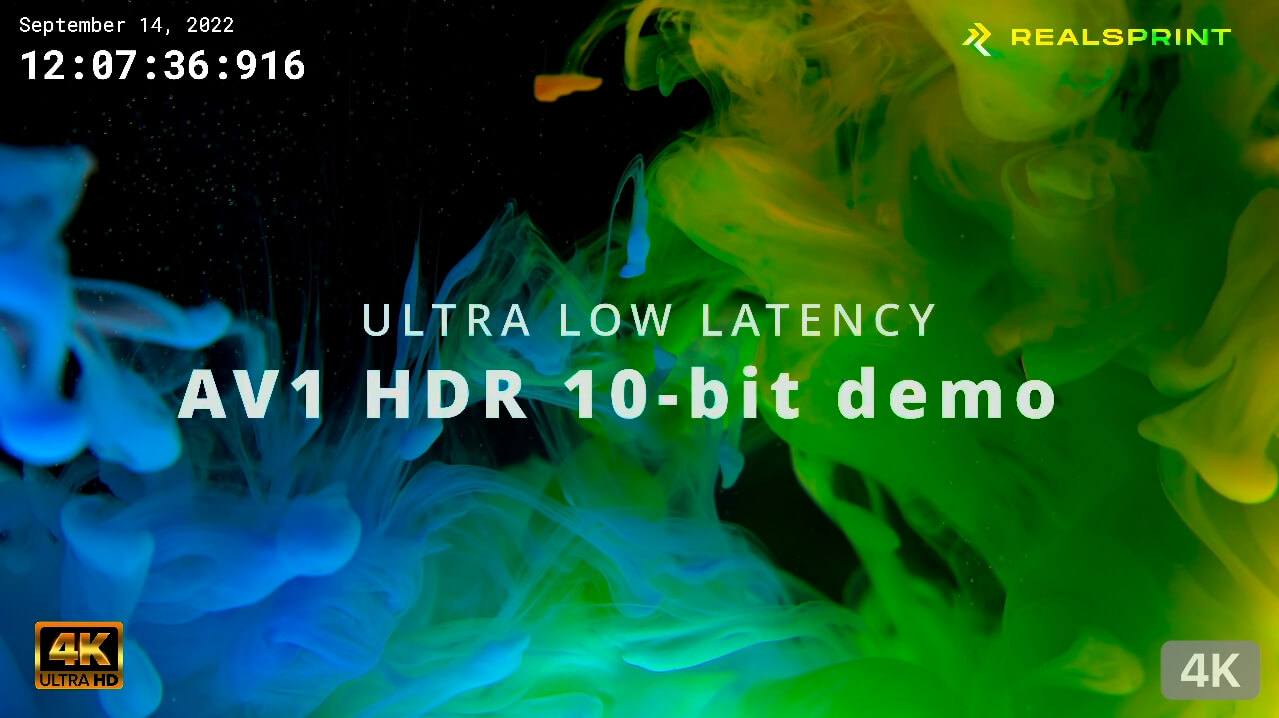The future of live streaming is taking shape. Today Realsprint can announce the world’s first AV1 4K 10-bit HDR live streaming solution at sub-second latency and synchronized playout, with Vindral playing a major role in the development. Behind the technology is a three-way partnership between RealSprint, NETINT Technologies, and Oracle, which paved the way for the solution’s development – available in a live ABR demo with four profiles ranging from 360p to 4K at 12 Mbit/s. The solution utilizes Vindral, delivering high-quality video at sub-second latency and synchronization at scale, augmented with NETINT Technologies ASIC-powered Quadra T2 Video Processing Unit (VPU) and Oracle’s cloud infrastructure for global scale out. The performance marks a significant breakthrough, as it amplifies the viewing experience globally and showcases the thrilling performance of future live streaming.
Beating industry-wide shortcomings
Live experiences are rarely flawless. Watching a live stream on-the-go can be a frustrating experience. Live streams often lag, buffer or jitter, and video quality can drop quickly, especially on congested networks. At the same time, the consumer is expecting flawless delivery, now more than ever. The demand for higher quality, greater stability, better synchronization, and faster delivery, highlights the industry-wide inefficiency of contemporary codecs, such as H.264’s ability to stream high-quality content over the internet. Even though H.264 is currently the most widely deployed codec for the web, it’s unlikely to perform well in the future, as rising quality in video content require more bandwidth. In contrast, the effective quality-to-bandwidth performance of the AV1 codec opens the possibility to stream video content more efficiently, even in markets characterized by extensive bandwidth limitations and instabilities.
The compression of AV1 is approximately 50% more effective than H.264 and 30% more effective than HEVC, which clearly positions AV1 for the future. Although device support for hardware accelerated AV1 decoding is still limited, the solution points to the potential of AV1’s broad-scale adoption. Youtube and Netflix have both adopted the royalty-free, open-source AV1 codec to tackle the issue of rising qualities in OTT streaming, delivering higher frame rates in high-resolution formats, including 4K and even 8K. Now, that possibility is becoming a reality in live streaming as well.

Viewers are driving expectations for higher qualities, and new live verticals requiring the compression-efficiency of AV1 are emerging. Live sports, live auctions, live shopping, and interactive game shows all make the case for the promising AV1 codec. Beyond quality, these verticals require guaranteed sub-second latency and playout synchronization at scale to accelerate the user experience and reinvigorate the field of interactive live streaming. Thus, moving beyond the capacity of real-time-based solutions such as WebRTC and LL-HLS Chunked CMAF, trimmed exclusively for either fast delivery or stability. Vindral positions in the so-called Sweet Spot between these technologies, yielding an all-around performance enhancement.
The solution is available as a live demo at AV1 Demo. There is also a side-by-side comparison between AV1 and H.264 to use as a benchmark, available at comparison. Have a look. We’ll be curious to hear what you think.


